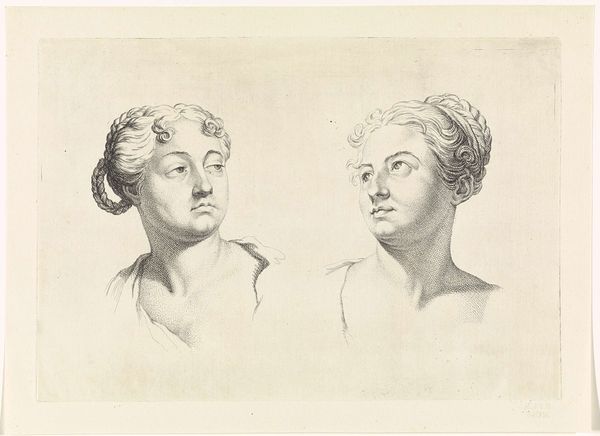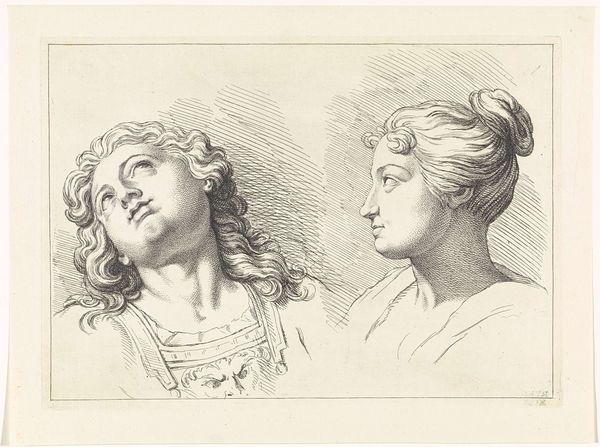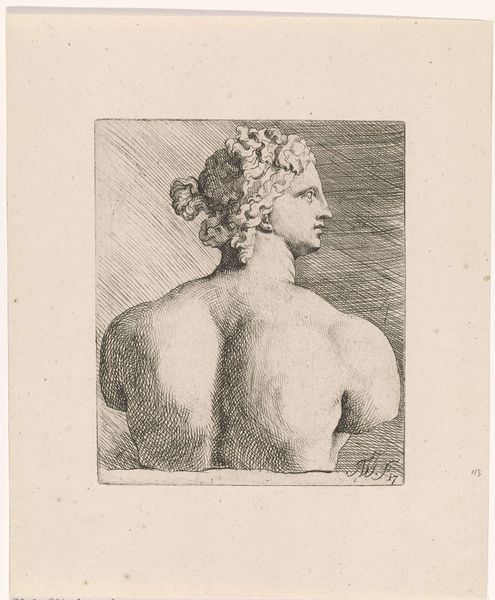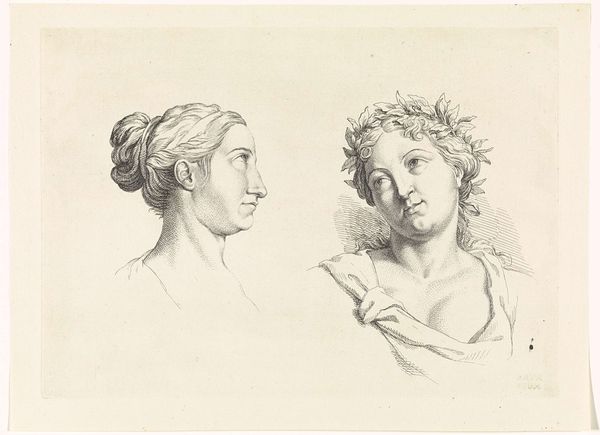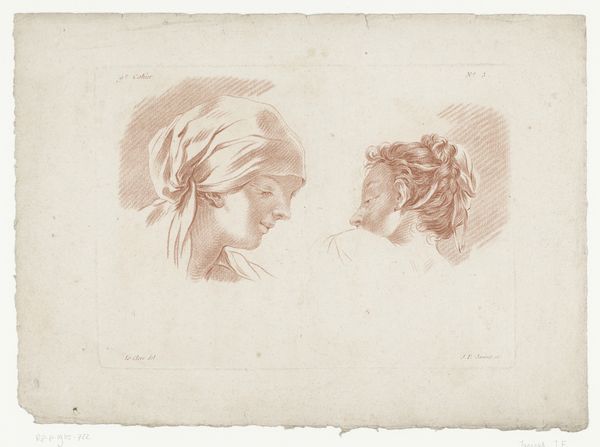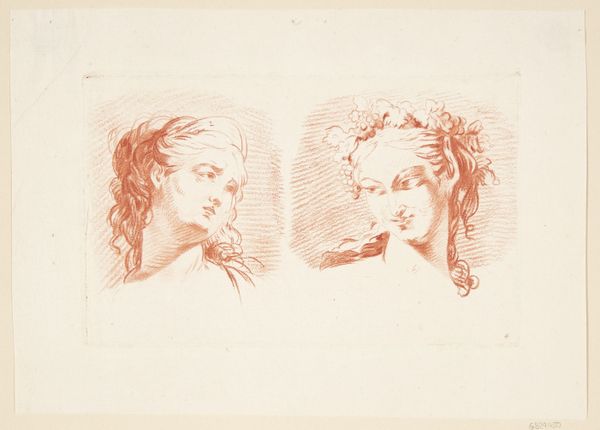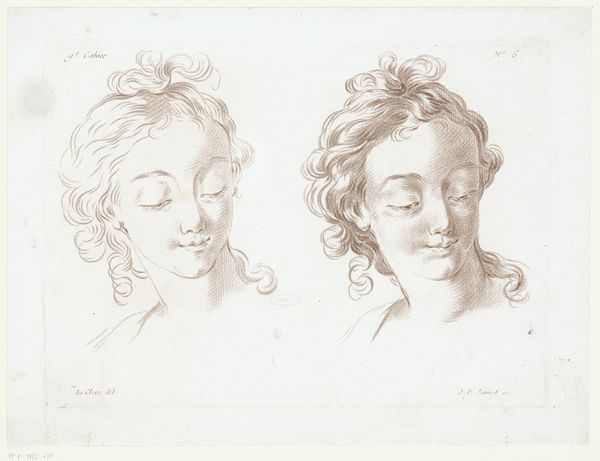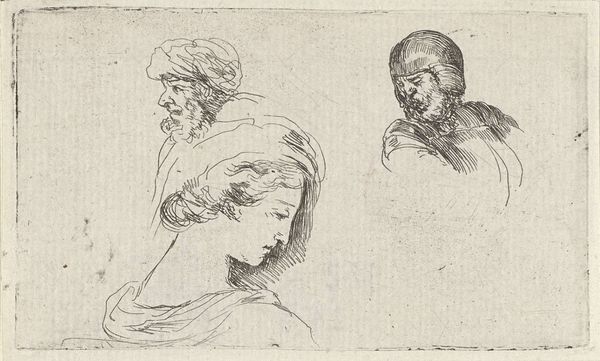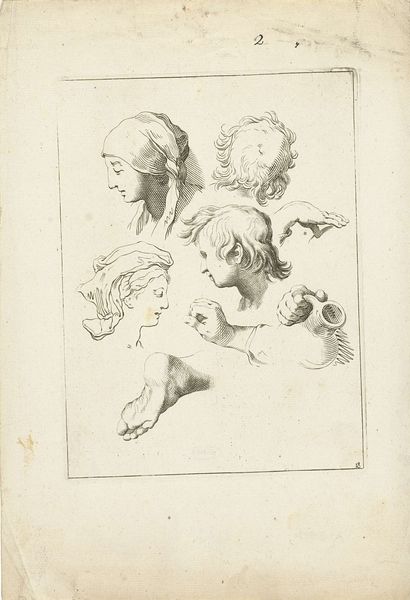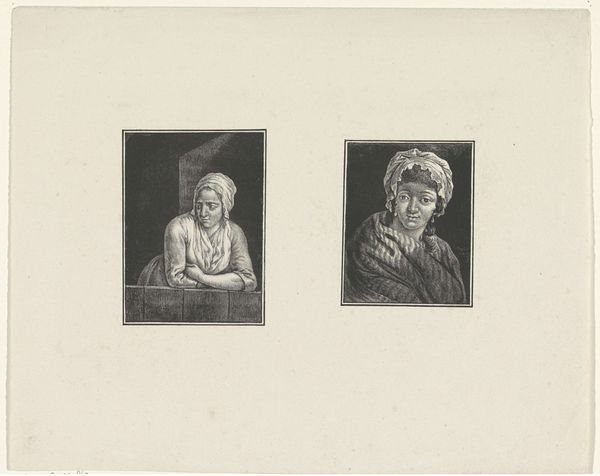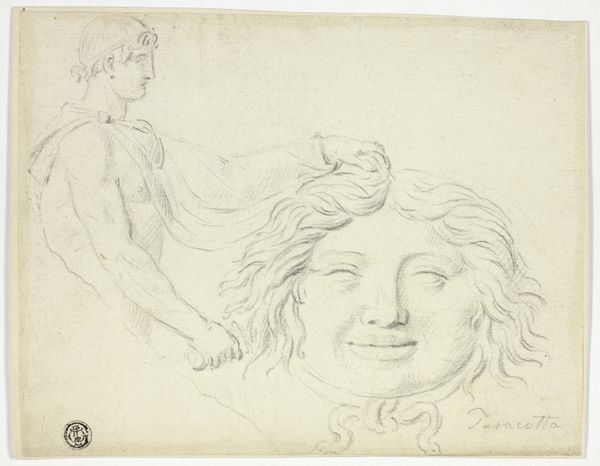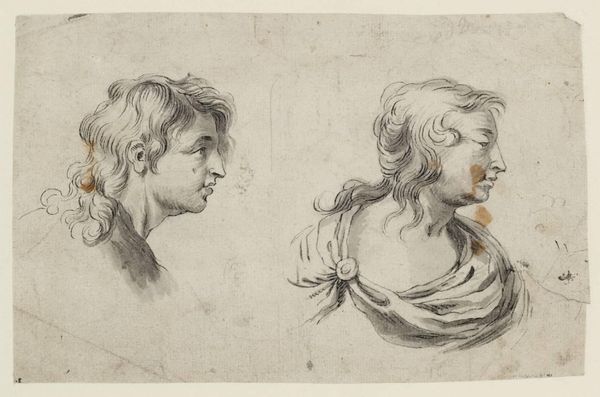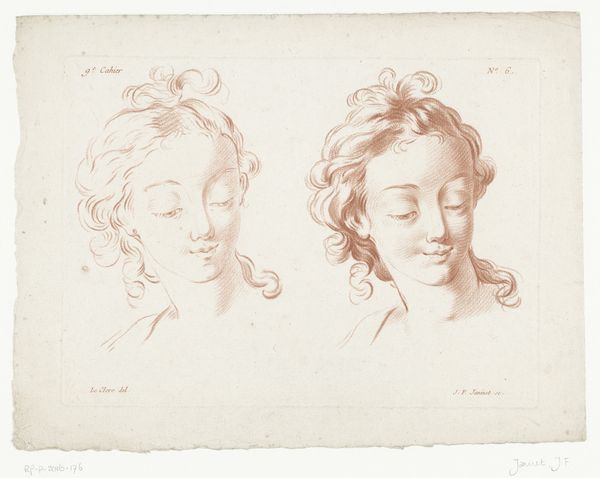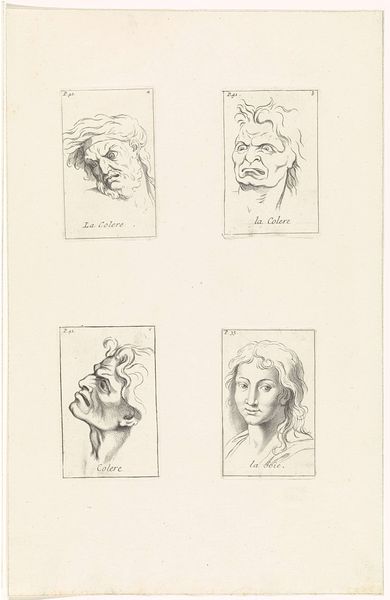
drawing, print, paper, ink, engraving
#
portrait
#
drawing
#
woman
#
baroque
# print
#
figuration
#
paper
#
ink
#
pencil drawing
#
portrait drawing
#
engraving
Dimensions: height 217 mm, width 302 mm
Copyright: Rijks Museum: Open Domain
Curator: Standing before us is “Studies van twee vrouwenhoofden” attributed to Bernard Picart, a work originating from between 1683 and 1733. It resides here in the Rijksmuseum. It’s an engraving rendered in ink on paper. Editor: The stark contrast of the figures against the white background immediately catches my eye. It feels austere, almost academic in its presentation. Curator: Indeed. The medium itself, engraving, speaks to a specific mode of art production in that era. It’s not spontaneous, but a result of careful labor, of considered choices in technique and the use of specialized tools to render these studies, raising interesting questions about artistic intention and accessibility during that period. How does that meticulous craftsmanship affect your interpretation? Editor: It points towards the restrictive, gendered world of artistic training. The fact that these are "studies" suggests practice, but for whom? Were these studies for a male artist, using female models, reinforcing their subjugation and objectification through the very process of artistic production? Or were these created to instruct aspiring female artists, excluded from formal academies, navigating limited avenues for artistic expression? Curator: That's an intriguing perspective. Focusing on the social context of production helps expose possible hierarchies and biases, impacting what the image communicated then and continues to evoke now. Thinking materially, how do you think the accessibility of printed images like these impacted art consumption, given the expensive, individualized commissions available via painting? Editor: Exactly, this widespread reproduction democratized representation—or, at least, parts of the elite could consume it. But this does not democratize representation, as such studies more often reflected prevailing patriarchal standards. Notice the subtle differences in their gazes, perhaps indicating different social expectations and limitations for women in that society? One head bowed demurely, the other looking upwards and perhaps hopeful? Curator: That’s insightful. Considering how this piece reflects broader artistic conventions around female representation, this engraving offers material and visual insight into the conditions and construction of gendered identities within Baroque visual culture. The method behind these portraits is perhaps more potent and revealing than the simple composition. Editor: Ultimately, the piece provides us with an opportunity to see the interplay of technique, production, and the way artworks both influence and are influenced by cultural, political, and social norms. Curator: Agreed. Viewing art as a product of its time as a valuable insight in helping to uncover its deeper complexities.
Comments
No comments
Be the first to comment and join the conversation on the ultimate creative platform.
